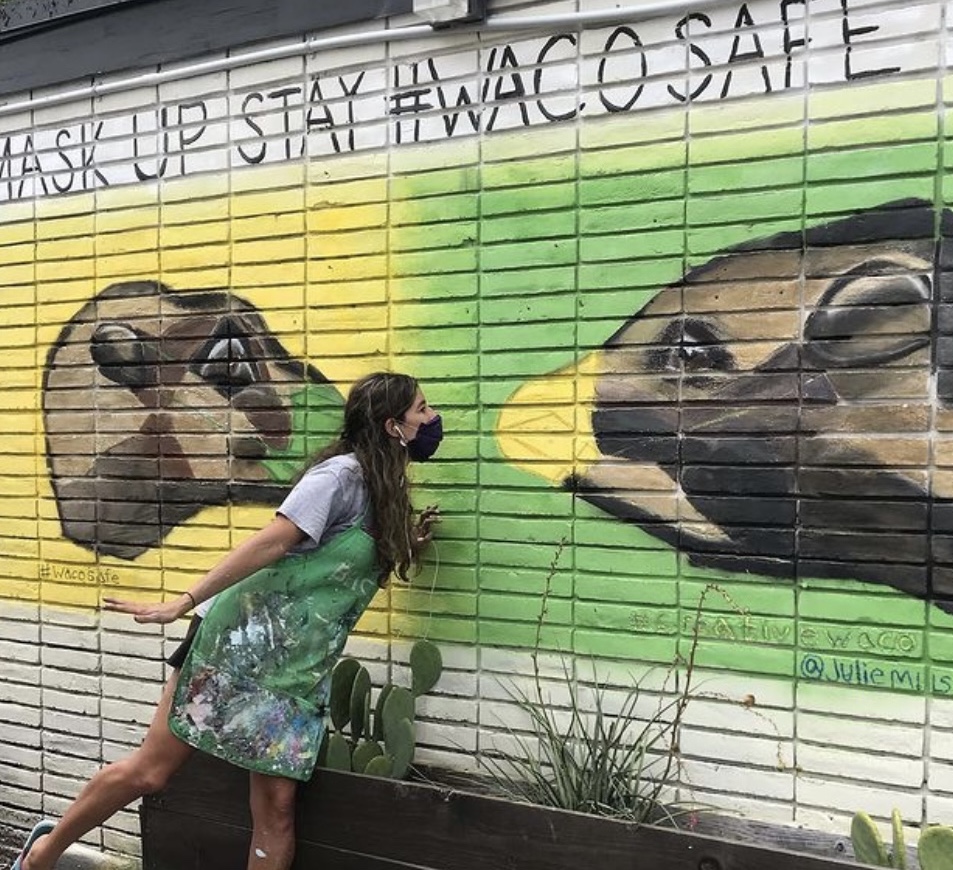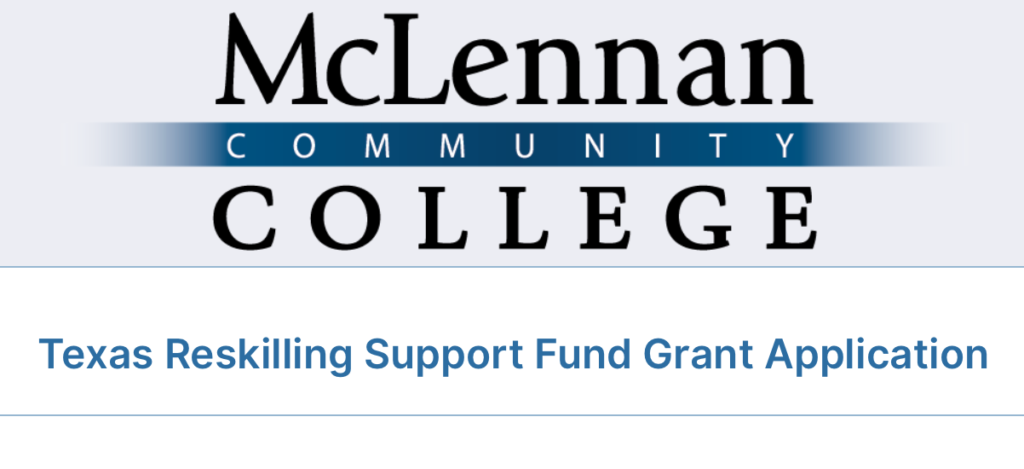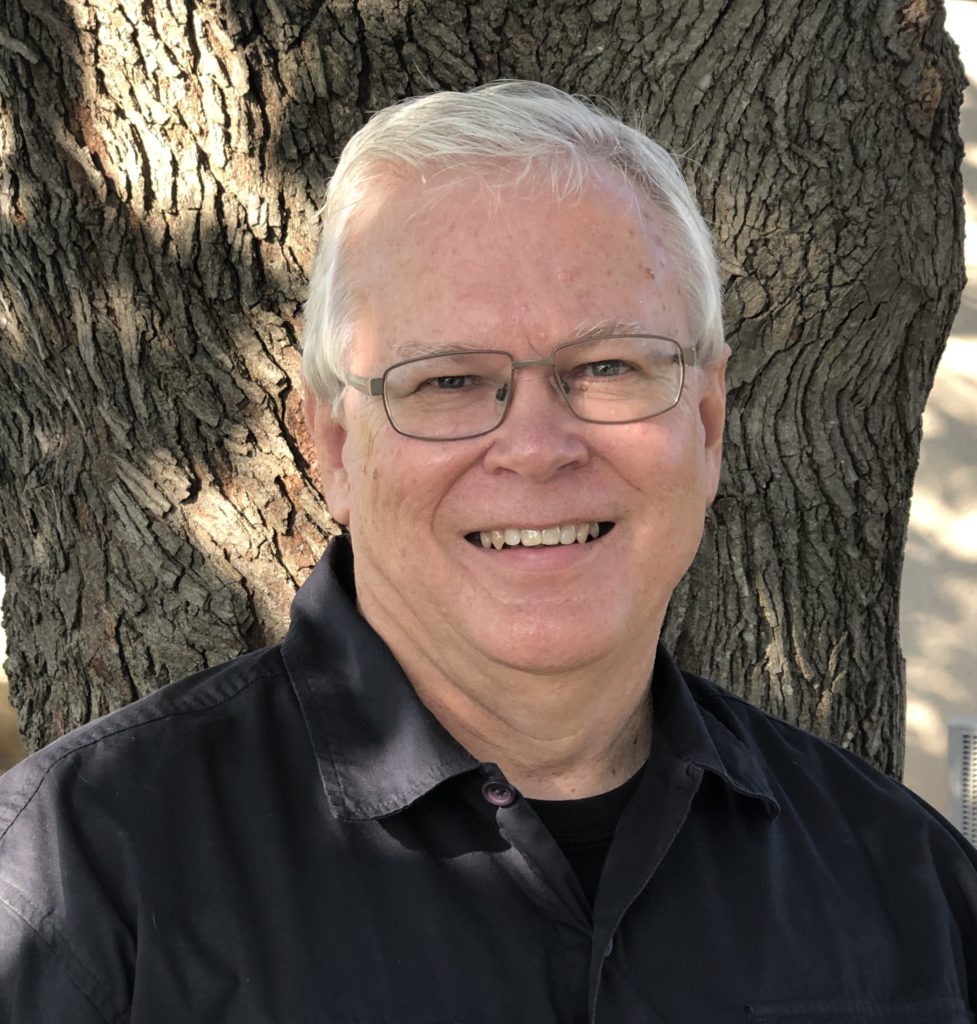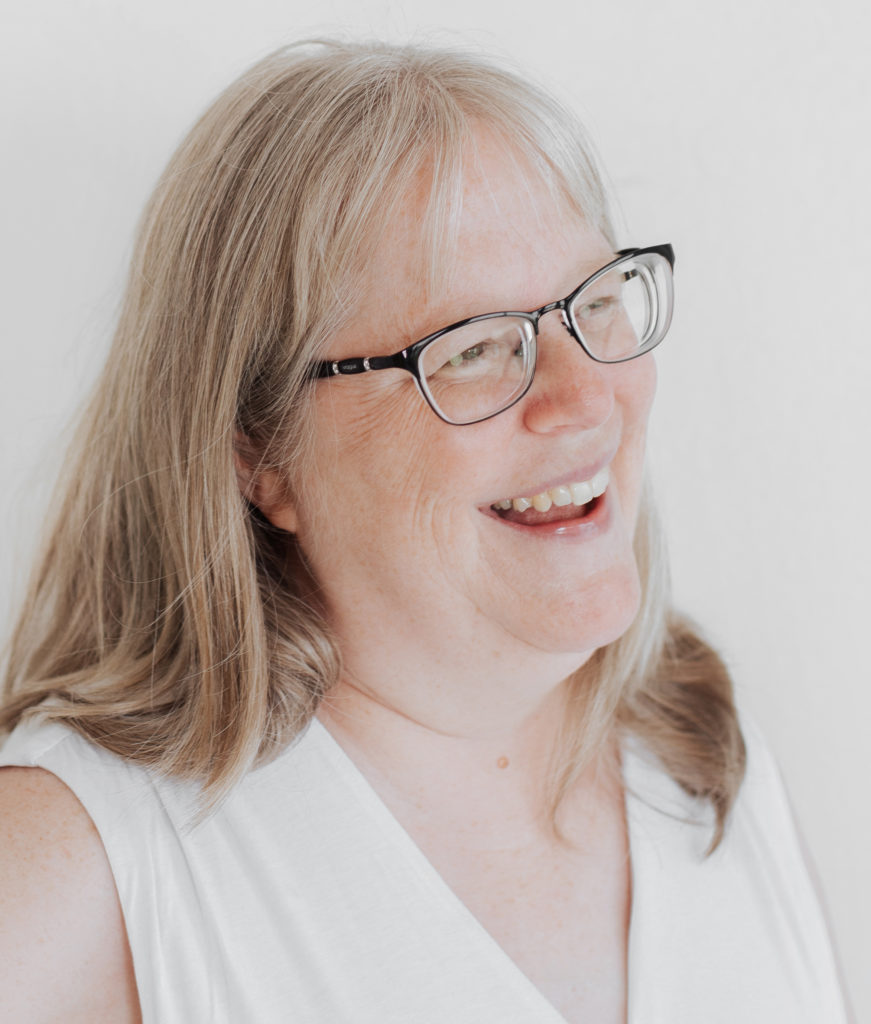
By Debbie Wright
Julie Milstead is a local artist and educator. She has partnered with Creative Waco to bring works of art alive all across the city. Her day job is with kids at Midway Middle School, and she takes her role as an educator very seriously.
She translated this love in her life into a recent Mural for The Cove, which is a teen nurturing center designed to provide a safe space for students experiencing homelessness to access the resources they need to thrive. It is a partnership with Creative Waco and their “artprenticeship.” The mural shows a beautiful mosaic-style yellow bird trailed by puzzle pieces.
Harold Brown, the Cove’s community relations coordinator, said the puzzle pieces represent all the people that help the Cove students and the bird itself represents the Cove students and their ability to overcome and soar above anything that comes their way. Milstead said this was an amazing experience where she was able to work with some beautiful souls.
Not only has she worked on The Cove mural, she also worked on some fun Baylor-inspired murals on windows downtown. Since Baylor Homecoming was canceled in 2020, artists took to the walls of Waco to celebrate and depict scenes of Baylor throughout our town. If you get the chance to swing by the Hippodrome and Raleigh on 8th Street and Austin Avenue you can find her two bear pieces. One is reminiscent of the Baylor Sailor bear in a colorful pop art tile-grid style, and the other is a stylized balloon bear.

I actually ran into Julie at one of my favorite coffee locations, Pinewood Coffee Bar, off Austin Ave., while she was in the process of painting some beautiful bears wearing masks with the fabulous Fiona Bond. This piece was a part of the #WacoSafe mural project, and she calls this painting “COVID Kisses.” In 2020, she also participated in the #WeChalkWaco campaign in partnership with MC Art Supplies.
Milstead has worked all over Waco, and you might have even seen some of her works in the past at Dichotomy and not even known it.
Though she is a talented artist who has worked with many mediums — including painting on sidewalks, walls, glass, shoes, tables, drum rims, and even gaming controllers — she works a lot with acrylic paint to bring her abstract designs to life on canvas. Her abstract works are visually stunning with bright colors and texture.
One of my personal favorite collections is her Waco Cityscapes collection, and you can find one featured at The Brazos Theatre. To find more of her art and follow her on her journey on Instagram @julie_milstead_artists. There you can see her many loves and the things she is inspired by, like her travels, her family, and even Jujitsu.

Debbie Wright runs the local Know Waco Podcast, which features upcoming events and activities happening in and around the Waco area. She is a recent Texas Tech graduate, with a major in communications and minor in public relations. She has lived in the Waco area for 10 years and loves to work with local creatives and artists.
The Act Locally Waco blog publishes posts with a connection to these aspirations for Waco. If you are interested in writing for the Act Locally Waco Blog, please email Ferrell Foster at [email protected].
By Candace Kelm
College students affected by COVID-19 can now apply for Texas Reskilling grant funds through McLennan Community College to help get back on track to earning a certificate or degree. MCC was awarded $112,500 in funding by the Texas Higher Education Coordinating Board to help 75 students who stopped attending classes due to the pandemic and wanted to continue their education.

The program is also available to displaced workers affected by COVID-19 needing to gain new skills to re-enter the workforce. More than 70 of MCC’s degree and certificate programs are approved for the grant funds, and eligible students will receive $500-$2,500 per semester to be enrolled either full or part time.
To be eligible, students must:
* Be a Texas resident eligible for in-state tuition;
* Have filed a Free Application for Federal Student Aid (FAFSA);
* Have financial need and be eligible for federal Title IV aid (students enrolled in short-term non-eligible Title IV workforce credential programs, but who are otherwise Title IV eligible, may be included);
* Have affirmed they were affected by COVID-19;
* Be enrolled in an eligible undergraduate or short-term workforce credential program either full or part time;
* Have not been enrolled in an accredited postsecondary institution during the Fall 2020 semester or previous six months; and
* Must be within 12 months of completing their credential program.
Interested students should complete the online application. Registration is still open for those wishing to continue their education this spring. Spring Second 8-Week classes begin March 15. For more information or to enroll for spring classes, contact Highlander Central at 254-299-8622 or [email protected].
The Act Locally Waco blog publishes posts with a connection to these aspirations for Waco. If you are interested in writing for the Act Locally Waco Blog, please email Ferrell Foster at [email protected].
Mayor’s Opening Remarks
Transcript with Headers Added
COVID-19 Press Conference, Jan. 20
By Mayor Dillon Meek
I appreciate everyone taking the time to join us. . . .
I’ll talk briefly on hospitalizations. Thank you to our healthcare providers. You are extravagantly serving us and we are thankful.
Hospitals and Doctors
Our local hospital systems, our city staff, our county judge, and myself are in close, regular contact with one another as we discuss and monitor data regarding our hospital capacity and hospital personnel and monitor whether or not there will be a need for an alternative care site. To date, this seems more improbable than probable.
Our hospitals and our Waco-McLennan County Office of Emergency Management have developed robust plans to keep our population safe should the number of hospital patients increase to a degree of serious alarm.
Our local doctors continue to advise us of the seriousness of this virus, and I urge our community to also make wise decisions in the days ahead by following these doctors’ calls to wear masks in public, follow safe-distancing protocol, and wash hands. Following this doctor-endorsed protocol makes this situation not fearful.
State Control
As a reminder, at the present time, Texas mayors and local governments have almost no policy-making authority. Gov. Abbot has implemented and has control of the regulations and mandates – from wearing masks to closures of bars to occupancy of requirements of businesses. The governor has issued an order stating we cannot issue more restrictive orders than him. We have not heard any word from the governor’s office that this might change.
Testing
The Waco-McLennan County Emergency Operations Center is working with the Texas Department of Emergency Management and DOCS Health Testing to provide free COVID-19 testing to the community. When you register online, it does ask for your insurance information. You do not have to have insurance to receive a test. For people with insurance, there is no out-of-pocket cost or co-pay to get the test. Please go to COVIDwaco.com to register.
Temporary Morgue
The Waco-McLennan County Emergency Management office previously received a refrigerated trailer to be used as a temporary morgue. This refrigerated truck is currently housing 23 remains.
Vaccinations
I will give a brief update on the Health District, which is but one vaccine provider in McLennan County, and then Judge Felton will discuss the other 20 vaccine providers in our county, as well as the vaccination process at the national and state level. (As a reminder, other vaccine providers include HEB, Veterans’ Affairs, CVS, Family Health System, and the hospital systems, as well as the Health District. Our Health District and Providence have both separately been designated as vaccination hubs.)
The Waco-McLennan County Public Health District is one of the local vaccine providers committed to serving the public and operating with complete transparency and with that I move into my report.
Today is Day 1 of the second vaccine clinic. We are running the clinic today and tomorrow and distributing the second 1,500 dose allocation that we recently received from the Texas Department of State Health Services.
We have heard the many frustrations with the clinic registration process, and I want you to know that we are listening and we are continually looking at ways to make changes to the process and make it as equitable as possible. I would ask for your patience for our Health District and city staff — they have worked tirelessly throughout the pandemic and now through this vaccine distribution process. This is just the second allotment that we have gotten as a function of being one of the state’s 28 vaccine hubs and we made a number of changes to the registration process over the past week.
Some of the things we did differently for the registration process this weekend were to:
— Announce 24 hours ahead of time that appointments would be made available.
— Open up registration at two different times to provide accessibility for those who may work on weekends.
— Reserve a percentage of appointments specifically for people calling because they do not have online access.
Throughout this process we have communicated and worked with area churches, non-profit and social service agencies, and community leaders to try and ensure that our vulnerable populations are not being left out of this process. I thank them for their help.
In the first clinic, about 87% of appointments were made by McLennan County residents. Just over 7% of individuals vaccinated were African American and just under 9% were Hispanic. 88% of individuals were white.
This week, 77% of appointments were made by McLennan County residents. Again, about 7% are African American and just under 14% are Hispanic. 86% are white.
We are committed to evaluating our process and making adjustments to ensure that it is equitable and that everyone will have a fair and equitable opportunity to get this vaccine .
Ultimately, the 1,500-dose allotment we are getting is nowhere near enough to meet the demand we are seeing within our community. This weekend online registration appointments were full in less than 10 minutes on Sunday and in less than 5 minutes on Monday. In just over a 36-hour period Sunday to Monday, our call center received almost 20,000 calls. We had 8 call-center operators on Sunday and 12 on Monday — these staff were able to answer and speak with 571 callers in less than an hour on Sunday and 491 callers on Monday.
For future clinics, there will not be a registration period like what has been hosted these past two weekends. The Health District has established a wait list for the vaccine. If you have already attempted to sign up for appointments and either signed up for the wait list through the registration portal text number or through the email newsletter you will be on this wait list. We have almost 14,000 people on the wait list, and it continues to grow.
Beginning today, a wait list registration link is available on COVIDwaco.com or by calling in to the call center at 254-750-1890 for assistance registering.
The Health District will contact people from this list to fill cancellations and to schedule appointments for future clinics. All vaccinations continue to be by appointment only. There are no walk-ups accepted at the vaccine clinic.
Thank You
We are excited to continue this vaccination effort in Waco and McLennan County. I would like to thank the Waco-McLennan County Public Health District staff, supporting City of Waco departments, and all of the community partners who have made these clinics possible and thank you for the efforts to date. You are doing important work in our community.
Lastly, I would like to invite our community to tune in to a COVID-19 vaccine town hall meeting that will take place on Jan. 21, 2021 from 7-8 p.m., featuring Commissioner Patricia Miller as moderator, Dr. Terri Woods-Campbell, Dr. Peaches Henry, Council Member Andrea Barefield, Dr. Jimmy Hunter, and Chet Edwards. This town hall will be available on Channel 10, as well as the Waco City Cable Channel.
By Ferrell Foster
Neighbors figure large in human interaction. They give us friendship, help, and encouragement as we face the varied opportunities and challenges of life. And because we care about both ourselves and our neighbors, we get vaccinations.

Tuesday afternoon, I rolled up my sleeve and took a literal shot in the arm. I was one of 424 people vaccinated on the first day of the “first large-scale public COVID-19 vaccination clinic in McLennan County,” as reported by the Waco Tribune-Herald.
Our Waco-McLennan County Public Health District and all others involved in this clinic deserve applause for this beginning. The process was smooth and efficient — in and out pretty quickly. Volunteers from McLennan Community College’s nursing program and Waco’s Family Health Center, plus the Waco Fire Department, ran the clinic.
I arrived 15 minutes early for my Tuesday afternoon appointment, went through the various steps, and received my shot promptly and on time. After the shot, I waited the required 15 minutes before leaving. Eighteen hours later, I have had no reaction to the shot other than a sore arm reminiscent of the shingles vaccine I received a couple of years ago.
The clinic will give 1,500 vaccinations by appointment this week (already booked up), but this is just the beginning. My age got me into this group, and it was good to see other Wacoans taking advantage of the opportunity.
I am concerned that people with little or no Internet access are at a big disadvantage when appointments are made online, but I hope our health district is working for ways to connect with this important part of our community — maybe with some appointments being made through community organizations, rather than online.
Large-scale vaccination is not an easy job, but we have started, and that is good for the health, education, jobs, business, entertainment, and government. Let’s keep #WacoSafe.

Ferrell Foster is acting executive director of Act Locally Waco. He also is senior content specialist for care and communication with Prosper Waco.
The Act Locally Waco blog publishes posts with a connection to these aspirations for Waco. If you are interested in writing for the Act Locally Waco Blog, please email Ferrell Foster at [email protected].
By Candice Kelm
McLennan Community College has been awarded $112,500 as part of the Texas Higher Education Coordinating Board’s Texas Reskilling Support Fund Grant program.
The new program aims to help Texans affected by COVID-19, including displaced workers needing to gain new skills to re-enter the workforce and also to support students who left their pursuit of higher education before receiving a credential. MCC’s award is part of $18.1 million awarded by THECB to 49 Texas institutions.
MCC has designated the funds to serve up to 75 students who previously stopped and would like to return to MCC to complete a certificate or associate’s degree. More than 70 of the college’s programs are approved for the program. Eligible students will receive $500-$2,500 per semester and can be enrolled either full or part-time.
To be eligible, the student must:
· Be a Texas residents eligible for in-state tuition;
· Have filed a Free Application for Federal Student Aid (FAFSA);
· Have financial need and be eligible for federal Title IV aid (including students enrolled in short-term non-eligible Title IV workforce credential programs, but who are otherwise Title IV eligible);
· Have affirmed they were affected by COVID-19;
· Be enrolled in an eligible undergraduate or short-term workforce credential program either full or part-time;
· Have not been enrolled in an accredited postsecondary institution in the previous academic semester or previous six months; and
· Must be within 12 months of completing their credential program.
Students wishing to enroll for the spring semester and interested in the program should complete the Reskilling Fund Application during the advising process.
For more information about the program or to enroll for spring classes, contact Highlander Central at 254-299-8622 or [email protected].
The Act Locally Waco blog publishes posts with a connection to these aspirations for Waco. If you are interested in writing for the Act Locally Waco Blog, please email Ferrell Foster at [email protected].
By Meg Wallace
The first appearance of a mental illness can be terrifying, whether you are the one experiencing it or someone you care about is falling ill. Your mind is muddled, a crisis is gathering steam, and you know you need help — but where to begin? Who will help you find your way?
Chronic depression or anxiety can be isolating. You drop out of your usual activities because it hurts too much to start your day, or you fear you’ll have a panic attack in public. So you stop getting together with friends, and you miss one more Sunday at church. You retreat gradually, and no one notices you’re gone. You’re alone.
Amberley Collaborative has created a continuing education course called Mental Health in Congregations, offered through McLennan Community College Continuing Education beginning Tuesday, Jan 19.
Of course, professional help can make an enormous difference in your life. Medication can reduce your symptoms, and a therapist can help you sort things out. But living with a mental illness can be a day-to-day struggle, or bouts of worsening symptoms may disrupt a period of recovery. It can be a hard road, so hard to walk alone.
In many communities of faith, people commit to walking together. But walking with someone struggling with chronic depression or anxiety can challenge our empathy. We want our friend to snap out of their distress, and when they don’t, we’re unsure how to share time with them. A youth attempts suicide, or a member has a manic episode. They are receiving professional help, and we know we shouldn’t leave them to walk alone between therapy appointments. But the situation feels scary and confusing. What do we do?
Decades of research indicates that people in distress often turn to faith communities for support. When the congregation’s response is healthy, it can be a key aspect of recovery for people living with mental illness. But when the response is negative or unhelpful, congregations can do harm. Continuing education can help faith communities respond helpfully — accompanying people living with mental illness and supporting their recovery.
Amberley Collaborative is a new Waco nonprofit that aims to strengthen community support for people with disabilities and other challenges. In our Mental Health in Congregations initiative, we started by talking to leaders at 23 Waco-area congregations to learn how they’re walking alongside people who are struggling and how they’re helping them access professional services. We also wanted to know how these leaders take care of themselves while they care for others, and we asked what kind of support Amberley Collaborative could provide.
The leaders told us they want help figuring out how to organize care in their congregations so needs come to light and people are supported. They need to know more about mental health services and how to access them. They want to learn about various types of mental health challenges and what kinds of responses are helpful, and they want training on what to do in a crisis. They talked about needing to care well for themselves as they care for others. They want to increase the caring capacity of their faith communities by equipping Sunday school teachers and small group leaders to foster wellness in the groups they lead.
With guidance from these faith leaders, Amberley Collaborative has created a continuing education course called Mental Health in Congregations, offered through McLennan Community College Continuing Education beginning Tuesday, Jan 19. The presenters are mental health professionals, pastors, and people with lived experience of mental illness, and each of the six 90-minute sessions is interactive, with plenty of time for dialogue. Our goal is not just to deliver information, but to create a community of care that will last long after the course is over, and to connect participants with mental health professionals who will continue to support their good work in the future.
Please join us. You can learn more about the class on the Amberley Collaborative website. To register go to the MCC website.

Meg Wallace, MA, LMSW, is a 2018 graduate of Baylor’s Garland School of Social Work. She founded the nonprofit Amberley Collaborative to cultivate the kind of community care her own family has needed while grappling with disability. She continues to work as a freelance editor and book indexer while developing the nonprofit.
The Act Locally Waco blog publishes posts with a connection to these aspirations for Waco. If you are interested in writing for the Act Locally Waco Blog, please email Ferrell Foster at [email protected].
By City of Waco Public Information Office
The General Election for City of Waco council members for Districts II, IV, and V, will be held Saturday, May 1. The first day to file for a place on the ballot is Wednesday, Jan. 13. The last day to file is Friday, Feb. 12, by 5 p.m.
Applications for a place on the ballot are filed at the City Secretary’s Office Monday – Friday from 8 a.m. – 5 p.m. Due to COVID-19 concerns and regulations, the city secretary is scheduling appointments for in-person services. Please call 254-750-5750 to schedule an appointment.
Physical address for filing applications in person:
City Secretary’s Office First Floor – City Hall
300 Austin Ave., Waco, TX 76701
To mail an application for a place on the ballot. Application must be notarized before filing.
Esmeralda Hudson, TRMC, CPM
City Secretary
PO Box 2570
Waco, TX 76702-2570
Applications for a place on the ballot can be emailed to [email protected] and must be notarized before filing.
Applications and candidate packets are available online on the City of Waco Election web page or by calling the City Secretary’s Office at 254-750-5750 to schedule an appointment.
For more information contact Esmeralda Hudson, city secretary, at 254-750-5750.
By Paula Solano
Cheers to the New Year! A new year, a new beginning. As we return to our routines, a little planning will not only save time and money, it can help you set and maintain a new routine.
Our environment and communities have a great influence on our beliefs and behaviors. As we begin to plan for the return of in-person learning, I’m reminded of a person who had a significant impact on the nutrition choices I was making as a parent. A brief conversation transformed my thoughts on packing school lunch. Now, packing lunch or even drinks and a snack are essential in our household.
The seasonal vegetable for this month’s “Better Living for Texans” blog is lettuce. Lettuce is in season in the spring and fall and has an ethnic presence in Asian, Southeast Asian (Vietnam, Cambodia, Laos), African, Latino, and Mediterranean cuisines.
Did you know May is National Salad Month? Share your photos on social media platforms using #RomaineLettuce! @fruitsandveggies. I’ve selected lettuce as the vegetable of the month as it represents a nutrition staple and can be paired with endless accompanying fruits, vegetables or serve as a side dish for a meal.
Nutritional Facts and Health Claims
While many factors impact one’s health, let’s learn nutritional claims about lettuce. The nutritional value of lettuce varies, generally, lettuce is low fat, saturated fat-free, cholesterol free, sodium free, high in vitamin A, low calorie, and a good source of folate (folic acid).
According to the American Cancer Society and American Cancer Institute, foods rich in vitamin A and C (antioxidants) protect against some forms of cancer.
Hypertension & Sodium: A diet low in sodium may reduce the risk of high
blood pressure, a disease associated with various factors. Lettuce contains very low sodium.
Coronary and Risk of Coronary Heart Disease & Dietary Saturated Fat: While many factors impact heart disease, a diet low in saturated fat and cholesterol may reduce the risk of the disease. Lettuce contains no saturated fat or cholesterol.
Cancer & Fiber – Containing Grain Products, Fruits, and Vegetables: Lettuce is high in vitamin A. A low-fat diet rich in fruits and vegetables may reduce the risk of some types of cancer. The disease is associated with various factors.
Shopping & Storage:

Lettuce is a cool weather crop. When shopping for lettuce,
select those closely bunched, with a fresh appearance.
Avoid those with brown or wilting edges.
Avoid storing lettuce with apples, pears, or bananas.
Wrap fresh, unwashed lettuce in plastic wrap and store for a few
days. Cooler temperature will maintain lettuce fresh longer.
Discard lettuce that appears to have brown spots or has a slimy
appearance.
Get the Facts!
Wash your hands as recommended by the CDC and clean contact
surfaces often.
The U.S. Department of Agriculture MyPlate provides recipes,
tips, and resources to guide you in creating a healthy eating plan.
Start simple, download the MyPlate App, an easy-to-use app that
will help guide you and track your progress.
Use:
Avocado Garden Salad
Source: Eat Fresh
Cook Time: 20 minutes
Serving: 6
Ingredients
- 6 cups of mixed salad greens
- 3 tomatoes (medium) chopped
- 5 green onions chopped
- 1 cucumber small, peeled and chopped
- 2 tablespoon of lemon juice
- 1/3 teaspoon garlic powder
- ½ teaspoon black pepper (ground)
- ½ teaspoon salt
- 1 avocado (large) peeled
Directions
- In a large serving bowl, mix salad greens, tomatoes, onions, and cucumbers
- In a small bowl, mix lemon juice, garlic powder, ground black pepper, and salt. Stir with a fork or whisk. Pour over the salad mixture and toss together.
- Cut the avocado half lengthwise, remove the pit, and peel avocado halves. Slice into thin wedges.
- Arrange avocado slices on top of the salad and serve.
Nutrition Information and More
Serving size: 1½ cup
Total calories 78, total fat 5g, saturated fat 1g, carbohydrates 9g, protein 2g, fiber 4g, and sodium 222 mg
Recipe: https://eatfresh.org/recipe/salads/avocado-garden-salad#.X_UHl9hKiUk
Tasty Taco Rice Salad
Source: Arizona Health Zone
Servings: 8
Ingredients
- 1 pound of lean ground beef
- 1 ½ cup of instant brown rice, cooked
- 2 cups of water
- 1 cup of onion, chopped
- 1 tablespoon of chili powder
- 3 cups of tomatoes chopped
- 1 seeded jalapeño finely chopped
- 2 cups of spinach or romaine lettuce
- 1 ½ cup of low-fat cheese, shredded
Directions
- Washing hands with soap and warm water.
- Wash onion, tomatoes, jalapeño, and spinach or romaine lettuce before preparing.
- Cook ground meat in a large skillet until brown (160℉). Drain off fat. Rinse meat with warm water to remove the grease.*
- Add rice, water onion, and chili powder to meat in skillet.
- Cover. Simmer over low heat about 15 minutes to cook rice.
- Add tomatoes and jalapeño. Heat for 2-3 minutes.
- Layer spinach or romaine lettuce, rice mixture and cheese on a plate.
- Serve.
*Do not pour grease down the drain. Allow grease to harden, then place in the trash.
Recipe: https://www.azhealthzone.org/recipes/tasty-taco-rice-salad
Nutrition Facts (Per Serving)
Serving size 1 ½ cups
Calories 191, carbohydrate 19g, protein 18.8g, total fat 4.5g, saturated fat 2g, trans fat 0g, cholesterol 35 mg, fiber 2g, total sugars 3g, sodium, 260mg, calcium 110mg, folate 30 mcg, iron, 1.75 mg, calories from fat 22%.
Share your favorite recipe with us!
Enjoy!

Paula Solano is a Master in Public Health student at Baylor University, certified Community Health Worker, an intern at the Texas A&M AgriLife Extension Service. A Waco native, she is passionate about serving her community, particularly underserved and underrepresented citizens.
The Act Locally Waco blog publishes posts with a connection to these aspirations for Waco. If you are interested in writing for the Act Locally Waco Blog, please email Ferrell Foster at [email protected].
—
Due to the continued spread of COVID-19 and the challenges it poses to communities across Texas, Texas A&M AgriLife Extension and many others continue to practice public health recommendations. Whether we are communicating online or face-to-face know that program content will always be research-backed to help individuals navigate decisions for themselves and their families. For information on resources, ideas, and programs for yourself and family visit Texas A&M AgriLife’s HUB.
USDA is an equal opportunity provider and employer. This material was funded by USDA’s Supplemental Nutrition Assistance Program. To learn more about SNAP or to apply for benefits, visit www.yourtexasbenefits.com
References:
Arizona Health Zone (2021) Tasty Taco Rice Salad. Retrieved from: https://www.azhealthzone.org/recipes/tasty-taco-rice-salad
Eat Fresh (2021) Avocado Garden Salad. Retrieved from: https://eatfresh.org/recipe/salads/avocado-garden-salad#.X_UHl9hKiUk
Fruits and Veggies (2021) Leaf Lettuce. Retrieved from: https://fruitsandveggies.org/fruits-and-veggies/leaf-lettuce/
University of Illinois Extension (2021) Watch Your Garden Grow. Retrieved from: https://web.extension.illinois.edu/veggies/lettuce.cfm
By Dan Ingham
For almost a century United Way of Waco-McLennan County has worked to address the needs and provide services for individuals and families in our community. In 2017 we centralized that work to focus on the areas of health, education, financial stability, and safety net services.

This focus of need can come in many forms. It could be ensuring our most vulnerable families have access to food and nutrition, assisting victims of abuse, helping young adults who do not have a home to go to at night, counseling support for mental health issues, or a wide variety of many other services.
The work and commitment of your United Way has remained steadfast to core principles of community need, community investment, community will. We ensure philanthropic dollars are strategically invested in the areas of greatest need through high-impact programming, and that the granting of those dollars is led by Community Investment Councils and guided by rigorous standards of reporting and accountability.
Responding to COVID-19
When the COVID-19 pandemic surfaced this past spring the immediate needs throughout our community quickly became much more serious and wide-spread. Many families were suddenly put in the new position of not having the income they once had, and for many the needs spiraled out of control. Suddenly, there were a higher number of concerns about meeting the very basics of feeding a family, paying the rent and utilities, and finding childcare so that parents could work.
By the end of April, United Way of Waco–McLennan County and Waco Foundation provided lead gifts and partnered to create the COVID-19 Community Response Fund. Within 90 days, the fund provided more than a quarter of a million dollars to support the work of our nonprofit community that was being asked, in real time, to quickly rise to the challenge of meeting these needs. Through the generosity of local companies and many individuals, our community rose to the occasion.
While thousands of people were helped, the pandemic continues, new needs arise, and long-term needs compound. The needs are greater than ever. That is what makes the success of this year’s United Way Annual Campaign even more critical. United Way knows that our primary obligation is to ensure our nonprofit partners have the support they need to do the hard work we ask them to do and need them to do — every day.
Nonprofits need your support to continue providing services
United Way’s 22 Funded Partners and 33 funded programs rely on funding from contributions to the Annual Campaign to continue meeting needs throughout the coming year. These organizations have already missed out on numerous fundraising opportunities in 2020 and have lost critical operating dollars.
Here is what we know to be true. In August of this year, 82% of Texas nonprofits reported to United Ways of Texas, our state association, that they were experiencing a reduction in revenue due to the cancellation of programs and events. Alongside that inability to fundraise, 62% of these same nonprofits reported an increase in demand for client services. These findings are in direct alignment to a local survey United Way of Waco-McLennan County commissioned this fall. 81% of McLennan County families say the pandemic has had a direct impact on their finances, and 63% are concerned about their mental health.
These findings confirm what we know to be true—our trusted nonprofits are being asked to do more with less. Each agency has had to make financial adjustments to simply make it through the year. I understand quite well that this is no different than what many other businesses in our community are facing right now. Yet, when our neighbors, whose income is negatively affected because of business disruptions, find themselves in need of assistance, where do they turn for help? Many look to nonprofit organizations like United Way’s Funded Partners.
Together, we can rise to meet this challenge
This year’s United Way Annual Campaign has faced many new challenges, much like our community at-large. Some of our long-time supporters are just not in the position to help as they have before. Others have stepped up their support because they are able. Through it all, United Way recognizes and appreciates every contribution, no matter its size.
Our community has risen to meet whatever challenges are facing us many times before. As one community we will persevere and find a way to take care of our neighbors in need. United Way and our Funded Partners must help those who have little hope for the future. United Way is needed now more than ever. Your support is appreciated more than ever, and yes, needed more than ever.
To give and learn more, visit UnitedWayWaco.org/donate.
Dan Ingham is resource development chair of United Way of Waco-McLennan County and vice president of communications & marketing at The First National Bank of Central Texas.
By Ferrell Foster
This has been a shocking week in our national history. Act Locally Waco is focused on Waco, but most of us have been a bit stunned this week as Americans.
In such divisive times, a communication tool like Act Locally Waco is more important than ever. Those of us involved in ALW — the board members, volunteers, and interns — believe in Waco and the people of this great city. We are so committed to Greater Waco, that we invest our time in service to it and want to help it achieve its great potential.
Waco has its various neighborhoods, religious bodies, businesses, and nonprofits, but we also need to promote our connectedness as we pursue the common good. Act Locally Waco is committed to that common good.
This has been the first week in ALW’s history that Ashley Thornton has not been at the head of Act Locally Waco. She has stepped down as executive director, but she is still our founder and very much a part of the heart of ALW.
I will serve for a time as acting executive director, and all of us involved with Act Locally Waco will be working to uphold its trusted place in our community.
So, while some things divide people, I’m confident we can also come together and continue the work of building the best Waco possible.
It is the community members who contribute to ALW that make it what it is, so please help us tell the stories and share the information about what is happening in our town. I’m an email away — [email protected].
Ferrell Foster is acting executive director of Act Locally Waco and senior content specialist for care and communication with Prosper Waco.
